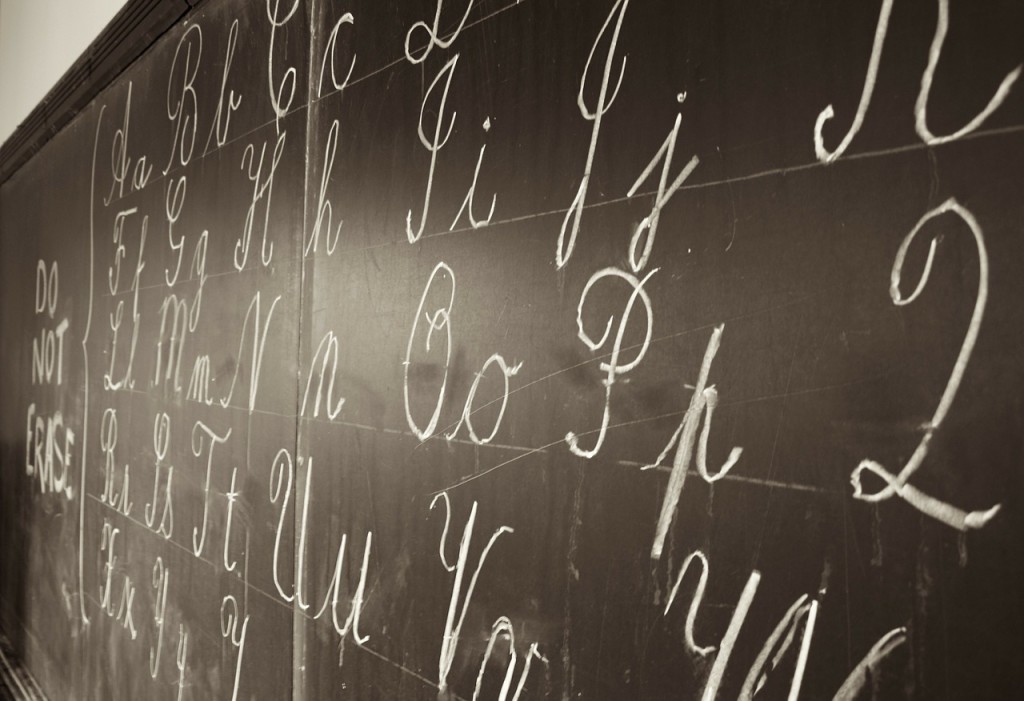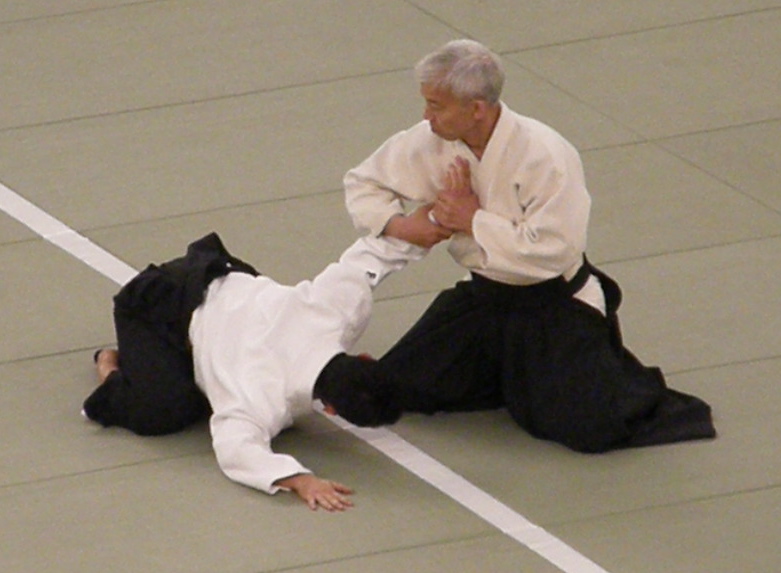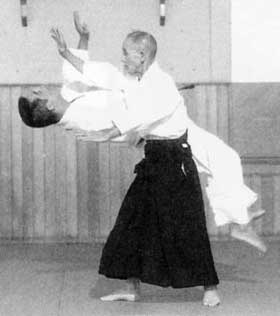
Aikido is normally seen as a nonverbal physical practice but Asi Sensei from Jerusalem Dojo describes Aikido as a language, a way of communicating with very limited expressions to represent division and negativity. Asi Sensei sees Aikido as a great opportunity to bridge barriers because we are naturally talking about the good stuff.

Aikido is a body language and there are not any inherently negative expressions. Sure, you can do a mean or nice nikkyo (see above) but nikkyo can be amazingly effective without any destructive force because it works WITH the mechanics of the body. Atemi (a symbolic but effective strike meant to facilitate a technique) is the meanest thing an Aikidoist has to “say.” Atemi is really intended to cause the attacker to react to or avoid a potential strike as a method of controlling the attacker’s spacing and balance. The best atemi would never make contact.

In our spoken languages (as well as other methods of self defense) there seems to be an unlimited number of ways to describe negative feelings, judgements, destruction, and especially devision. Linguists believe that language defines our experience. Comparing the number of words representing freedom, privacy, rights, individual, etc. in English to the available terms in Chinese is a good example of how language is can define and alter whole societies.
What is most interesting about Aikido is that it is most effectively executed when it is delivered through engaged, responsible, caring, maybe even loving movements. O’sesnsei spoke of aikido as the action of enveloping an attacker with the heart of love. Paul Linden has talked about how if he can practice with a feeling of “a smiling heart” where his arms are reaching, his body is expanding, his contact is soft and responsive then he moves better, stronger, and more fluidly. He says it make for better Aikido.
It helps me to remember that this in not peace and love in a utopian world but instead the expression of Aikido is in response to aggression and violence; practicing meeting something unquestionably negative with the our “best self.”

Reading over this blog post, it made me think about all the other forms of self defense. I have done Mixed Martial Arts for about three years, and have never thought of it as a “loving” or an art that shows “fluency.” All the movements in MMA are quick and fast and do not follow the fluent motion like Aikido. After having done the Aikido class for about four or five weeks now, I can see how it is relaxing. Having this as my last class of the week is the best thing I could ask for. I am so relaxed after this class and in an all around better mood. They talk about how Aikido is a “body language” and how you speak with your body. That is a very interesting way to think about it, but it all makes sense. During class, my teacher always says “thank you for throwing that punch” and stuff of that nature and carries our bodies along with the movement while he moves out of the way. There is never any anger with these movements and that is the highlight of the class.
I enjoyed this post, I always view Aikido as a dance, but it is nice to see a different perspective. Aikido is communication though, as we are using our bodies to work towards resolution. The goal of Aikido is to work with the body, not against, so generally the reaction causes less friction and more flow. The concept of a “smiling heart” reminds me of my instructor who reinforces his students with positivity and thanks them for the moves they choose to make against him, it definitely creates a different vibe than other forms of the martial arts.
I just realized I didn’t post 250 words, so I want to elaborate further on how Aikido has helped me be, maybe not my “best” self yet…but a better self. I suffer from severe anxiety; my life revolves around my worries, or has in the past. Aikido not only has helped me understand conflict resolution better, but has empowered me to take control of my life and practice being in the “moment.” I think with anxiety, it is exceedingly difficult to be present, even in your own life. Often you spend so much time worrying about what happened yesterday or what is going to happen next year that we are unable to enjoy the moment we are in presently. Before you know it, that moment in time next year that you were worried so much about is no longer the future, or even the present…but the past. And then you have no control over it any longer…if you had any control over it in the first place. So today, I am focusing on this moment. And I will focus on tomorrow when it comes.
I love the way Aikido challenges us to be our best self. It is a truly wise person who can respond to anger and hate with only love and a smiling heart. In our world we are always rushing from one place to another and letting the smallest inconvenience get under our skin and create negative thoughts. Aikido is a practice that reminds us to slow down and be kind. There are many times in life when we feel stressed or attacked and it is easy to respond to outside influences like that with anger. Here again Aikido reminds us that even though in this moment some force is acting against us, we must move forward with grace and understanding. As Megan pointed out, every moment should be experienced. We must be present in our lives and strive for happiness. Aikido is a way to help us learn the techniques to make that possible.
In this article, I was able to understand Aikido as an unspoken language; a body language. Though very few words are needed in this practice, it is still powerful nonetheless. In this article Asi Sensei breaks down the language of Aikido and how it speaks so much volume when practiced correctly. Aikido is spoken through the movements of the individuals, whether that be good or bad. Most of the time, Aikido is not meant to be negative or violent, but simply to respond to those things. In a time of conflict Aikido holds an appropriate response to quickly deescalate a situation. Asi Sensei believed that love and warmth can be practiced with Aikido, even in a time of conflict. My understanding of this is to do everything wholeheartedly and with a pure heart. Many of the moves are not with destructive force; but uses mechanics of both bodies. It is believed to defeat your opponent with love and embrace, which is sincerely different from other tactics with the purpose to harm the individual. I appreciate that it is understood that we do not live in a perfect world, where people don’t hurt others. However, with Aikido it shows that we are still able to defend ourselves, yet still be compassionate and caring for everyone involved. We are not expected to sit and take a beating, nor are we expected to beat someone senseless with our movements. Aikido is within the safe middle ground, which respects both sides of the battle.